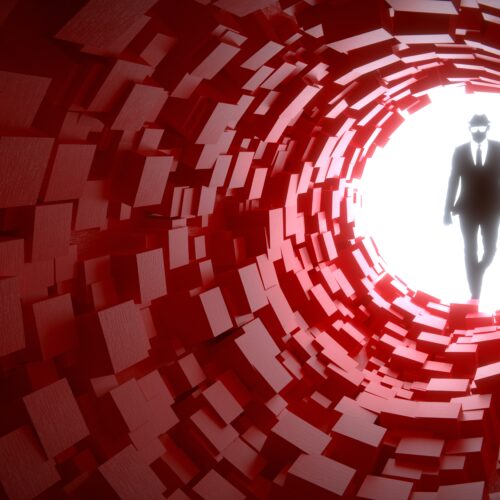
Misalignment Museum curator Audrey Kim discusses a work at the exhibit titled “Spambots.” Kif Leswing/CNBC
Audrey Kim is pretty sure a powerful robot isn’t going to har
vest resources from her body to fulfill its goals. But she’s taking the possibility seriously.
“On the record: I think it’s highly unlikely that AI will extract my atoms to turn me into paper clips,” Kim told CNBC in an interview. “However, I do see that there are a lot of potential destructive outcomes that could happen with this technology.”
Kim is the curator and driving force behind the Misalignment Museum, a new exhibition in San Francisco’s Mission District displaying artwork that addresses the possibility of an “AGI,” or artificial general intelligence. That’s an AI so powerful it can improve its capabilities faster than humans are able to, creating a feedback loop where it gets better and better until it’s got essentially unlimited brainpower.
If the super powerful AI is aligned with humans, it could be the end of hunger or work. But if it’s “misaligned,” things could get bad, the theory goes. Or, as a sign at the Misalignment Museum says: “Sorry for killing most of humanity.”
“AGI” and related terms like “AI safety” or “alignment” — or even older terms like “singularity” — refer to an idea that’s become a hot topic of discussion with artificial intelligence scientists, artists, message board intellectuals, and even some of the most powerful companies in Silicon Valley.
All these groups engage with the idea that humanity needs to figure out how to deal with all-powerful computers powered by AI before it’s too late and we accidentally build one.
The idea behind the exhibit, said Kim, who worked at Google and GM’s self-driving car subsidiary Cruise, is that a “misaligned” artificial intelligence in the future wiped out humanity, and left this art exhibit to apologize to current-day humans.
Much of the art is not only about AI but also uses AI-powered image generators, chatbots and other tools. The exhibit’s logo was made by OpenAI’s Dall-E image generator, and it took about 500 prompts, Kim says.
Most of the works are around the theme of “alignment” with increasingly powerful artificial intelligence or celebrate the “heroes who tried to mitigate the problem by warning early.”
“The goal isn’t actually to dictate an opinion about the topic. The goal is to create a space for people to reflect on the tech itself,” Kim said. “I think a lot of these questions have been happening in engineering and I would say they are very important. They’re also not as intelligible or accessible to nontechnical people.”
The exhibit is currently open to the public on Thursdays, Fridays, and Saturdays and runs through May 1. So far, it’s been primarily bankrolled by one anonymous donor, and Kim said she hopes to find enough donors to make it into a permanent exhibition.
“I’m all for more people critically thinking about this space, and you can’t be critical…
Go to Source
Author:








